One big hill, three ways up it - How to make one of Britain's toughest climbs even harder
Some of the best climbs in the UK and Europe have three roads up them - the challenge: To do them all in one day
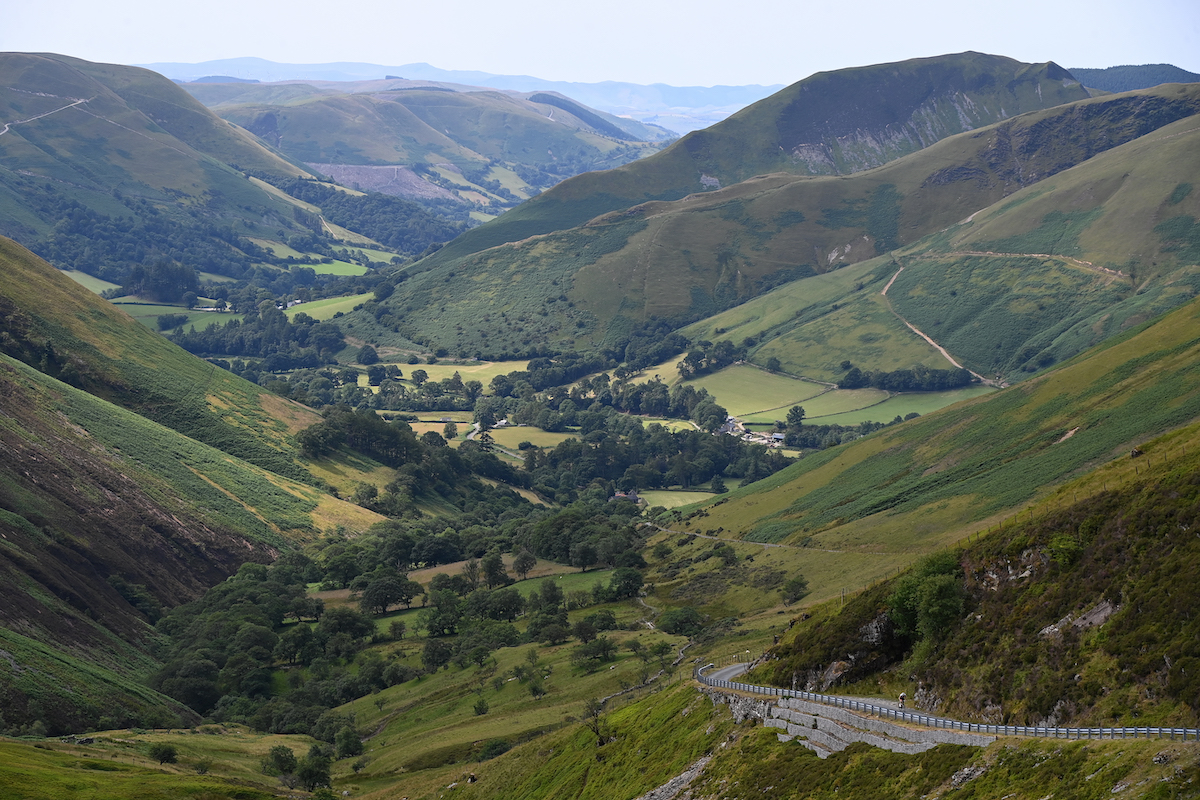
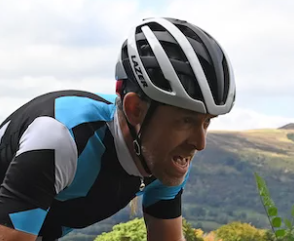
A few years ago, inspired by the challenge of riding Mont Ventoux three times in a day to claim membership of the Club des Cinglés I set about searching for roads in the UK where a similar challenge could be attempted. Of course there’s nothing on our island that comes remotely close to the mighty Giant of Provence but we have plenty of decent climbs and some are fortunate enough to provide three different paths to the summit.
My first location for such a challenge was the Bwlch in South Wales, a ride that accumulated 1,815 meters of altitude over a gruelling 85km kilometres without a single bit of flat road to tick off its three ascents.
Now, my quest for another such location has brought me back to Wales but I’m ramping it up a bit this time, turning up the volume of the gradient and taking on the one, the only, Bwlch y Groes. The southern ascent, from Dinas Mawddwy is revered as one of the toughest climbs in Britain, a true 10/10, featuring one of, if not the hardest stretch of continually brutal slope anywhere in the realm.
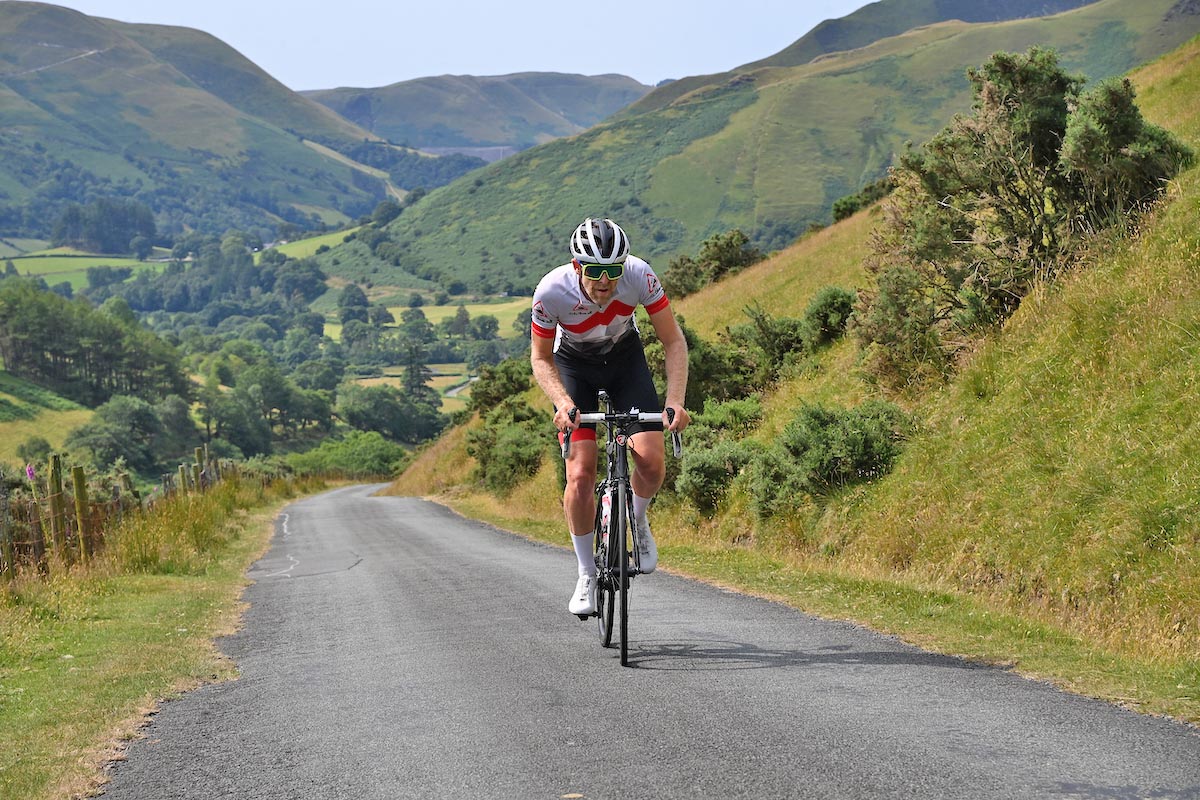
Climbing out of a valley - there's a lot of that in this ride
As we will discover though it’s not all about that one flank, there are, you guessed it, three magnificent routes to the top, all different in character, all a serious challenge which together make one hell of a bike ride.
First a little history on a road that has tormented generations of locals and visitors, and not just cyclists. The name Bwlch y Groes translates from Welsh as the pass of the cross, but don’t waste any time searching for said cross at the top, it’s long gone. Not happy with this name though, at some point in time the English, no doubt shocked by the madness of its severity branded it the ‘Hellfire Pass’, which, no disrespect to its original moniker, is a far more accurate description of what awaits
First treated to a layer of asphalt in 1954 the summit stands at 545 meters high making it the second highest public road in Wales, only bested by the Gospel Pass which tops out just four metres higher.
Until this upgrade the road was a mere dirt track, but one that even then had already built a fearsome reputation thanks to the motor industry using it to hammer their prototype vehicles. Due to its unrelenting savage gradients it was chosen by both Austin and Triumph to rigorously test their car’s performance uphill. And not only cars, motorcycle company BSA also utilised its notorious parcours, including in 1926 when they undertook a continual ride of 60 ascents of the pass.
Get The Leadout Newsletter
The latest race content, interviews, features, reviews and expert buying guides, direct to your inbox!
With the addition of tarmac though the road was then opened up to bike racing and throughout the 1970s and ’80s it became a regular feature of the long lost Milk Race. While the Tour de France would head to the Alps and Pyrenees for their mountain fix, and the Giro d'Italia the Dolomites, the Milk Race headed to Wales and the jewel in the crown of the Welsh mountains, the Bwlch Y Groes.
Trawling the internet, and old copies of Cycling Weekly magazine, you’ll find pictures of riders grinding up the 18% gradient on gears so large your knees will hurt just looking at them.
And those are the lucky ones that managed to keep riding because many, no doubt equipped with a 42 at the front and no larger than a 23 at the back were forced onto foot as their legs gave way. With today’s modern gearing though we will hopefully not succumb to the walk of shame as we set out to soak up everything the Hellfire Pass can throw at us.
Starting in Bala our route is designed to allow the perfect warm up, seven slightly undulating kilometres along the side of the lake before getting stuck into the onslaught of altitude that lies ahead. Ranking the upcoming three ascents in order of severity we will be tackling the second hardest first, followed by the easiest and then finishing, of course with the big one, just to further accentuate its impact.
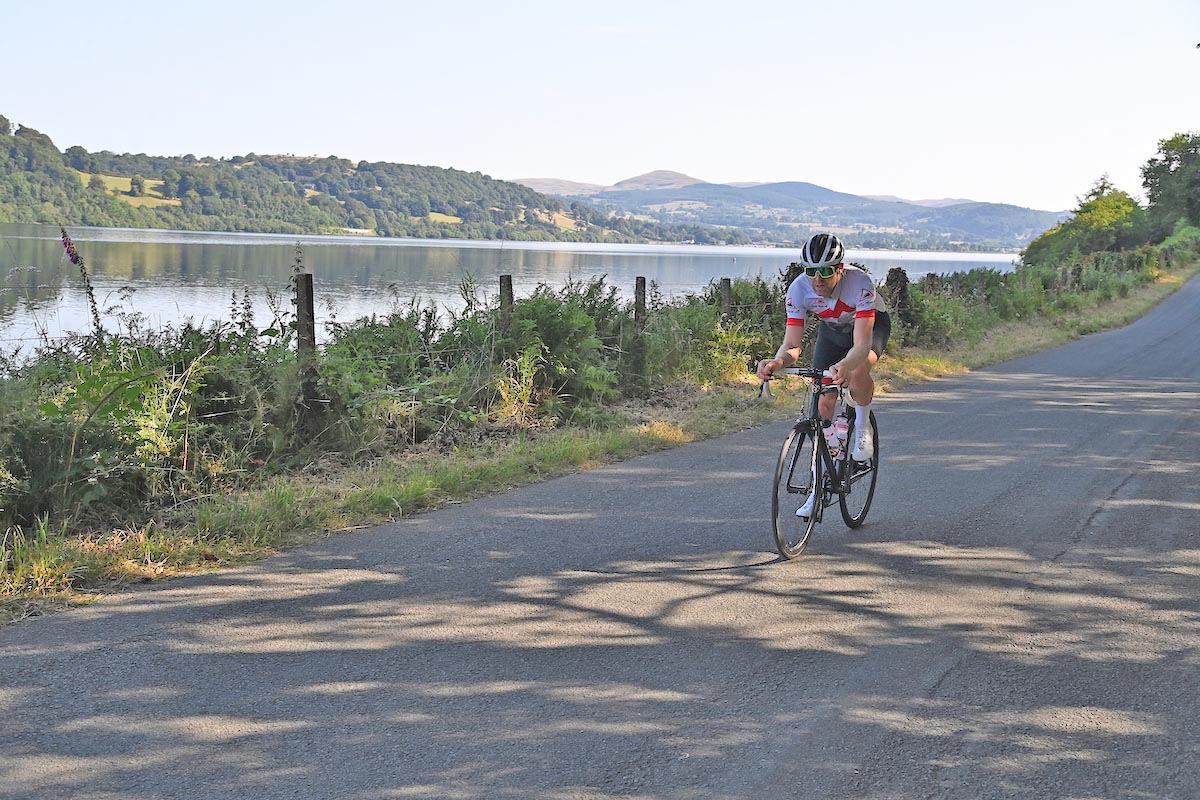
With the warm-up complete we turn south just before reaching the village of Llanuwchllyn and start the first climb, which at just over eight kilometres is quite a daunting prospect. The first four however are very gentle and indeed include a little downhill so we don’t really feel the bite until we reach Pont Ty-nant.
Crossing the small bridge it’s now that things begin to get serious and over the following four kilometres, as we rise out of the Cynllwyd Valley we find ourselves heading for the larger sprockets at the rear.
With vast views out to the right and even more spectacular ones back over our shoulder we pick our way up the very narrow road. Hugging the contours of the mountain side, in places barely wide enough for a single car and hitting almost 20% at times this wonderfully rugged climb tops out after gaining 376 meters at the small car park that marks the summit. One down, two to go.
Rolling straight over it’s time for the stunning descent all the way down to Lake Vyrnwy. All that hard earned altitude evaporates straight away as taking the left turn over the top we ride across the empty scenery before picking up speed as the angle of the slope increases and we drop like a stone to the banks of the picturesque lake.
Now, the purist in me, the climber, focused on the job in hand would say do a dead turn here and head straight back up. The thing is though, the road that circumnavigates this lake is so wonderful it would be a crime to leave without doing a lap. It’s pan flat so won’t use much effort so we recommend you enjoy it before taking on climbs, two and three.
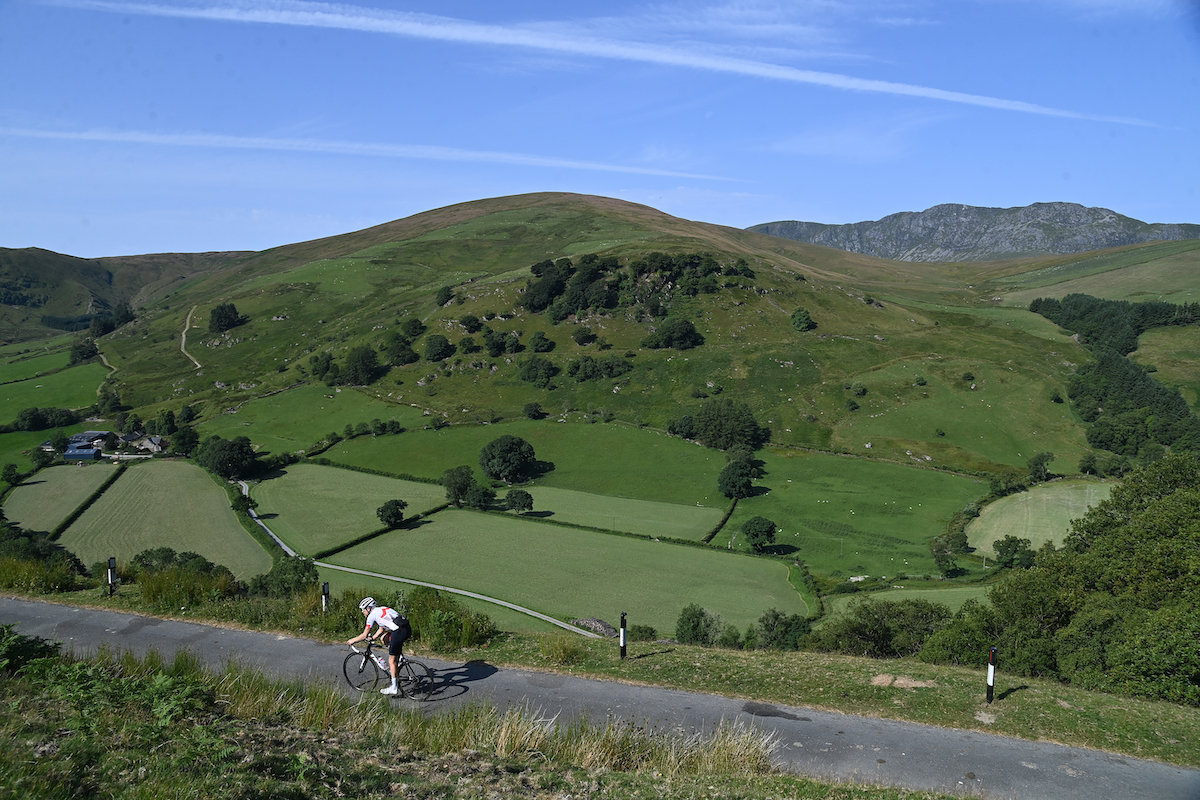
Once the intermission is over it’s time to get back to the top again. I rank this, our second ascent as the easiest of the three but it still packs quite a punch at the start with some serious double digit ramps interspersed with small descents before the gradient mellows over the second half as we cross the tranquil wilderness.
How hard you push is up to you but the last stretch is arguably big ring climbing if you feel brave as you bisect the wide expanse of shallow valley heading west. Upon reaching the junction, you may be about to congratulate yourself on completion of the second ascent, but oh no, to do this properly you must turn right and head back up to the car park one again. These 500 metres will sting, that’s for sure, but not half as much as they will sting the next time you ride them, oh no.
With two of the three in the bag it’s time for the big one. You could start to convince yourself you are almost there, you have done two thirds of the challenge, but those climbs, which were by no means easy, are nothing compared to the finale - nothing.
As we roll down, into the overwhelming grandeur of one of the great Welsh valleys you’ll notice your speed increase so rapidly it will take you by surprise. As if in free-fall the bike is pretty much running away and in an instant we’re reaching for the breaks to curb the acceleration as we plummet down the seemingly endless ramp approaching light speed. This is great funI think for a moment before I remember, oh, I’m going to have to ride back up in a few minutes.
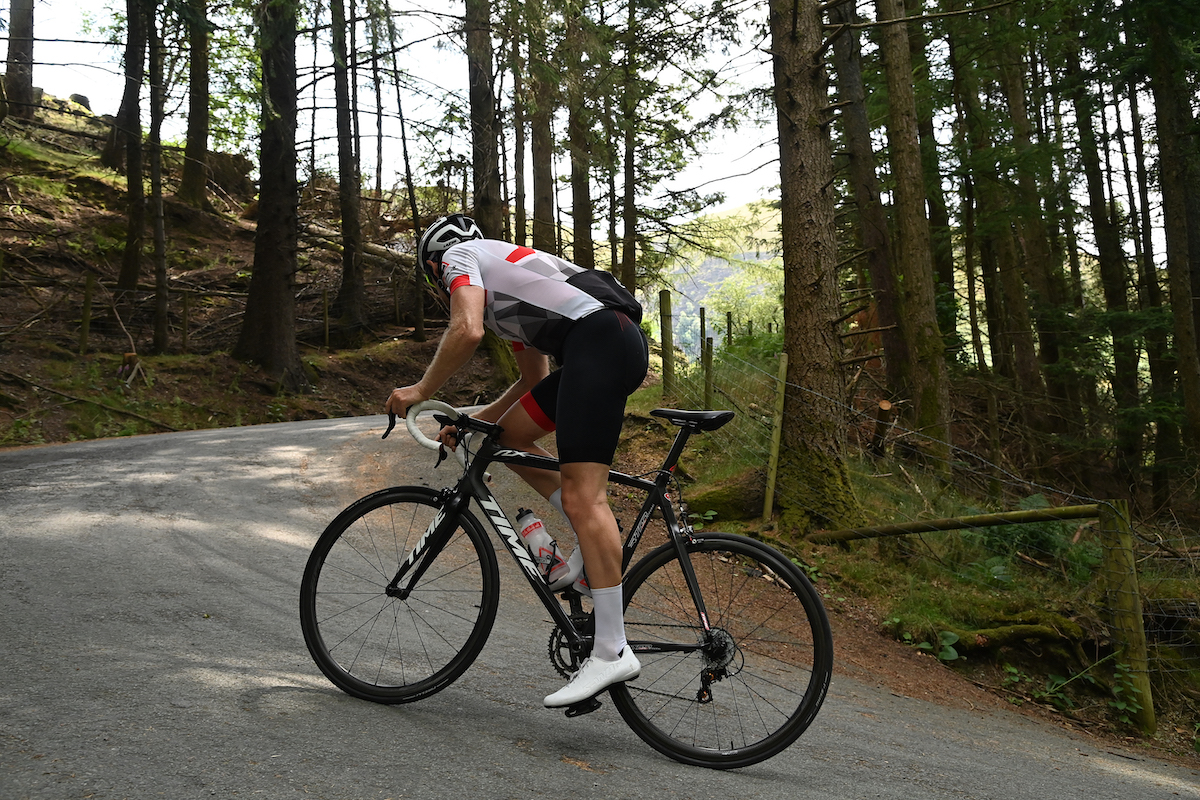
Rounding rocky out crops, across cattle grids, through the 25% S-bends we keep falling all the way to Llanymaddyywy. We don’t take the option to go for a pit stop at Dinas Mawddwy at the very end of the valley and the junction with the A470. There is one pub in the village, the Red Lion (www.yllewcoch.co.uk) and the Caffi’r Hen Siop café where you can refill on energy, or at the former purchase some Dutch courage. No matter where you choose to turn in the valley though, one inevitable fact remains, you are now faced with the ascent of the Bwlch y Groes.
Heading back through the multiple slight undulations on the approach road we have every right to feel the butterflies and maybe a slight dry feeling in the mouth. They didn’t choose this road above all others to test cars ability to cope with savage gradient by mistake. The Milk race organisers didn’t accidentally send what was then a thoroughly ill equipped peloton up here to delight the fans just because the scenery was nice. This climb is brutal.
That is rammed home when we look up. At first glance its a seemingly vertical path running along the mountain side above us. I gulp. Like a child stood at the base of a giant roller coaster, struggling to take in the scale and the consequent impending fear I rub my eyes and do a double take.
Pushing the fear aside though, I slap myself round the face and clear my mind of demons, “You can do this!” my subconscious yells.
First up, as we tear away from the valley floor, are the wonderful twin 25% corners. Ramping up, right then left, plunging our legs into the red; then as we exit easing, but only slightly, as we break from the shadow of conifers into the almost direct slog to the finish.
At first the slope settles to around a 10% pitch, stiff but not impossible, lined by a few small trees and bushes. Bending gently left as it rises with a smattering of slight kinks and alterations in direction to give us points to aim for, I focus ahead on the giant V formed by the interlocking mountain sides on the horizon.
Local knowledge
Where to stay
There are many places to stay in Bala from simple B&Bs right up to the grand Palé Hall if you are looking for some five star luxury, (www.palehall.co.uk). There are also plenty of restaurants, shops and a supermarket so everything you need to feed you before and after.
Where to eat
The only places to refuel on route are the Red Lion pub (www.yllewcoch.co.uk) and the wonderful Caffi’r Hen Siop café (www.facebook.com/caffigwen) both in Dinas Mawddwy.
Where to take the family
If you pass the Bala Lake Railway and fancy a ride on the little steam train find out more here https://bala-lake-railway.co.uk
Local bike shop
You’re really off the beaten track here so options are few and far between. Athertons in Machynlleth to the south is mountain-bike oriented but may be able to help. Failing that Dolgellau Cycles in, well, Dolgellau to the west is a good option.

At roughly half-way between the vicious bends down below and the eventual summit there is a momentary hiatus in the bombardment where we can gather ourselves for the final because if you though it had been hard until now, you ‘Ain’t seen nothing yet’. The next 700 meters never drop below 15% and mostly hover around 18% and this is what sets this climb apart. It isn’t the steepest but it is just about the longest continual stretch of climbing like this anywhere in Britain. There is no let up, nowhere to recover, it just goes on, remorsefully on.
Yes the sights out to your right across the valley are indeed spectacular and well worth the effort, but chances are the only thing you’ll be looking at are the two meters of grey tarmac in front of you as your contorted body fights gravity in search of the end. That is certainly what I’m doing.
As we make it to the junction leading down to Lake Vyrnwy we know we’ve completed the worst of it and all that’s left are those 500 meters to the summit, if you get to this point without putting a foot down you can consider the beast tamed.
Just 500 meters, slightly shallower in pitch but with lungs on fire and legs in pieces no less arduous. We fight though it, pick up whatever speed we can muster and finish with a flourish if to top out the last of the three mighty ascents of the great summit.
Now all we have to do is return to Bala, elated we rocket back down but take care because as this road is very narrow, rugged, with a poor line of sight and a few tight corners and pinch points. Turning right and back along the side of Lake Bala, we cross paths with the narrow gauge steam railway that runs along the shore. Filled with tourists, relaxing enjoying the scenery in the mountains, unaware of the torment we have just put our bodies through as we conquered the Hellfire pass, not once but three times.

Thank you for reading 20 articles this month* Join now for unlimited access
Enjoy your first month for just £1 / $1 / €1
*Read 5 free articles per month without a subscription

Join now for unlimited access
Try first month for just £1 / $1 / €1
Simon has been riding for over 30 years and has a long connection with Cycling Weekly, he was once a designer on the magazine and has been a regular contributor for many years. Arguably, though, he is best known as the author of Cycling Climbs series of books. Staring with 100 Greatest Cycling Climbs in 2010, Simon has set out to chronicle and, of course, ride the toughest cycling climbs across the UK and Europe. Since that first book, he's added 11 more, as well Ride Britain which showcases 40 inspirational road cycling routes. Based in Sheffield, Yorkshire, Simon continues to keep riding his bike uphill and guides rides, hosts events and gives talks on climbing hills on bikes!
-
 A bike rack with an app? Wahoo’s latest, and a hub silencer – Sea Otter Classic tech highlights, Part 2
A bike rack with an app? Wahoo’s latest, and a hub silencer – Sea Otter Classic tech highlights, Part 2A few standout pieces of gear from North America's biggest bike gathering
By Anne-Marije Rook
-
 Cycling's riders need more protection from mindless 'fans' at races to avoid another Mathieu van der Poel Paris-Roubaix bottle incident
Cycling's riders need more protection from mindless 'fans' at races to avoid another Mathieu van der Poel Paris-Roubaix bottle incidentCycling's authorities must do everything within their power to prevent spectators from assaulting riders
By Tom Thewlis